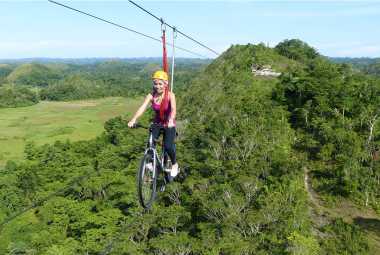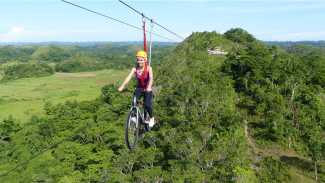Image by amazingnature-nancygoor.com
*Vacation Mode is a for-profit site. It contains paid banner advertisements that are generated and managed by a third-party network. This site also includes relevant affiliate links (both in the content and on the sidebar) all of which we do our best to clearly mark as such.
Introduction to Costa Rica's Diverse Bug Population
Costa Rica is a country blessed with an astonishing variety of flora and fauna, and its bug population is no exception. From its buzzing mosquitoes to its creepy crawlers like spiders and scorpions, Costa Rica is home to an impressive array of insects that capture the imagination and curiosity of visitors from all around the world.
When it comes to mosquitoes in Costa Rica, they are undoubtedly present. However, it's important to note that their abundance varies depending on the region and time of year.
The hot and humid climate creates favorable conditions for these pesky insects, especially during the rainy season when they seem to be more prevalent. But don't fret; this doesn't mean you'll have to spend your entire trip swatting away at them!
With a bit of preparation and some useful tips, you can minimize their impact on your adventure. Moving on to spiders, Costa Rica boasts a diverse range of species with all sorts of fascinating characteristics.
Tarantulas are among the most well-known arachnids in the country. Although they might seem intimidating due to their size, they are generally harmless unless provoked.
Interestingly enough, you have a higher chance of spotting tarantulas in rural areas or during night hikes rather than encountering them in urban settings. While we're discussing bugs in Costa Rica, it's essential not to overlook the issue of bug bites.
These can be an unfortunate side effect of exploring nature's wonders but understanding how to prevent them is key. Applying mosquito repellent containing DEET or wearing long-sleeved clothing can provide significant protection against mosquito bites and other insect nuisances.
Costa Rica's bug population offers both intrigue and challenges for visitors seeking unique encounters with nature's smaller inhabitants. Though mosquitoes may buzz about more frequently during certain times of the year, proper preparation will help keep their impact minimal.
Tarantulas may captivate arachnid enthusiasts but remember that they typically pose no threat. Employing preventative measures like mosquito repellent and protective clothing will shield you from unpleasant bug bites, allowing you to fully immerse yourself in the captivating world of Costa Rican insects.
Common Misconceptions About Bugs in Costa Rica
When it comes to bugs, Costa Rica often gets a bad rap. Many people have misconceptions about the abundance and severity of insect encounters in this beautiful country. It's time to set the record straight and debunk some of these common myths.
So, let's delve into the truth behind bugs in Costa Rica. First and foremost, it's crucial to address the notion that Costa Rica is overrun with mosquitoes.
While it is true that mosquitoes are present in the country, their prevalence varies depending on the region and time of year. The mosquito population tends to be higher during the rainy season when stagnant water provides ample breeding grounds.
However, with proper precautions such as wearing insect repellent and long-sleeved clothing, you can minimize your exposure and enjoy your Costa Rican adventure without worrying too much about pesky mosquito bites. Another misconception revolves around poisonous spiders lurking around every corner.
While there are indeed spider species in Costa Rica, including some venomous ones like the notorious Brazilian wandering spider (Phoneutria), encounters with them are relatively rare for tourists exploring popular destinations. It's important to note that most spiders found in Costa Rica are harmless and play an essential role in maintaining ecologically balanced ecosystems.
Now let's talk about everyone's favorite creepy-crawlies: cockroaches! Yes, they do exist in Costa Rica, but their presence is not as overwhelming as some might believe.
Like many tropical countries, cockroaches thrive where there is warmth and moisture; however, they tend to be more prevalent in urban areas rather than rural regions or rainforests where tourists usually spend their time adventuring through nature reserves or lounging on picturesque beaches. While bugs do exist in Costa Rica like any other tropical destination, it’s important not to exaggerate their presence or underestimate your ability to mitigate encounters with them effectively.
By taking simple precautions such as using insect repellent regularly, wearing appropriate clothing for protection against bites, and practicing good hygiene, you can enjoy the breathtaking landscapes and rich biodiversity that Costa Rica has to offer without letting the fear of bugs dampen your experience. So, don't let those misconceptions bug you; embrace the wonders of Costa Rican nature with confidence and curiosity!
Crazy Costa Rican Insects!
Video by The Wildlife Brothers
Detailed Guide to Mosquito Species in Costa Rica
When it comes to mosquitoes, Costa Rica is no stranger to these pesky little creatures. With its tropical climate and lush vegetation, the country provides a perfect breeding ground for various mosquito species. If you're planning a trip to Costa Rica, it's essential to have a detailed guide to mosquito species in order to protect yourself from these buzzing nuisances.
One of the most common mosquito species in Costa Rica is the Aedes aegypti. These mosquitoes are known for their black and white striped legs and their preference for urban areas.
They are active during daylight hours and can be carriers of diseases such as dengue fever, Zika virus, and chikungunya. To protect yourself from Aedes aegypti bites, it's crucial to use insect repellents containing DEET or picaridin and wear long-sleeved shirts and pants.
Another prevalent mosquito species in Costa Rica is the Anopheles mosquito, which is known for transmitting malaria. However, it's important to note that malaria is not widespread in Costa Rica and mainly occurs in remote areas near the border with Nicaragua.
If you plan on visiting these regions, consult your healthcare provider regarding necessary preventive measures such as antimalarial medications. In addition to Aedes aegypti and Anopheles mosquitoes, there are several other mosquito species found throughout Costa Rica.
These include Culex mosquitoes that primarily bite at dusk and dawn, as well as Psorophora mosquitoes that inhabit swampy areas. While most mosquito bites may result in itching or mild discomfort, it's always wise to take precautions by using insect repellent and avoiding stagnant water where mosquitoes tend to breed.
Overall, understanding the different mosquito species present in Costa Rica can help you prepare adequately for your trip. By arming yourself with effective bug repellents containing DEET or picaridin (which are widely available in local stores), wearing appropriate clothing, and taking necessary precautions, you can minimize the chances of mosquito bites and fully enjoy your time exploring the beautiful landscapes this country has to offer.
Preventing and Treating Mosquito Bites in Costa Rica

When you venture into the lush landscapes of Costa Rica, encountering mosquitoes is an inevitable part of the experience. These pesky insects thrive in the country's tropical climate, and their bites can be bothersome. However, with some preventive measures and effective treatment options, you can enjoy your time without letting mosquito bites dampen your spirits.
Prevention is key when it comes to avoiding mosquito bites in Costa Rica. Start by wearing long-sleeved shirts and long pants, especially during dusk and dawn when mosquitoes are most active.
Additionally, apply a reliable insect repellent containing DEET or picaridin to exposed areas of your body. Remember to reapply it as directed on the product label to ensure maximum effectiveness.
Another useful tip is to use mosquito nets while sleeping or resting in open-air accommodations. In case a mosquito still manages to nibble on you, swift action is necessary for relief and prevention of further irritation.
One popular remedy among locals involves applying a generous amount of freshly cut lime or lemon juice directly onto the bite area. This natural remedy not only helps alleviate itching but also disinfects the bite site due to its antimicrobial properties.
If itching persists or if you have an allergic reaction to a mosquito bite, over-the-counter antihistamine creams or oral medications can provide relief. Hydrocortisone cream or calamine lotion can also soothe itchiness effectively.
To prevent inflammation from spreading, try refraining from scratching the affected area excessively. Remember that while mosquitoes may be bothersome in Costa Rica, they do not pose significant health risks like diseases such as malaria or dengue fever that are prevalent in other regions of the world.
Nonetheless, it's always wise to consult with a healthcare professional before traveling if you have any concerns about potential insect-borne illnesses. By taking these precautionary steps and knowing how to treat mosquito bites effectively when needed, you can make your journey through Costa Rica's bug-filled paradise more enjoyable and worry-free.
A Closer Look at Costa Rica's Spiders: Species and Habitats
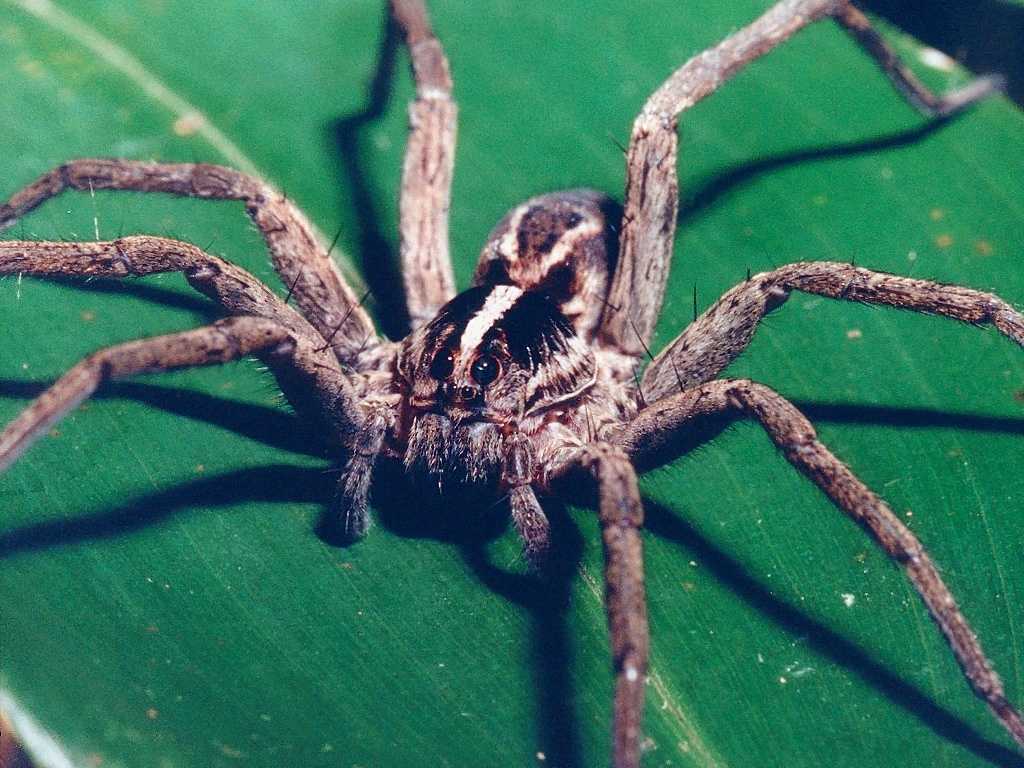
When exploring the rich biodiversity of Costa Rica, it's impossible to overlook the fascinating world of spiders that inhabit this tropical paradise. With over 1,500 species identified so far, Costa Rica boasts an impressive variety of spiders, each with its unique characteristics and habitats. From the delicate orb-weavers to the formidable tarantulas, these eight-legged wonders can be found throughout the country's diverse ecosystems.
One commonly encountered spider species in Costa Rica is the Golden Silk Orb-weaver (Nephila clavipes). Recognizable by their large size and vibrant yellow coloration, these spiders are known for their intricate webs that glisten in the sunlight.
You might spot them in gardens or forested areas where they patiently wait for unsuspecting prey to entangle in their silky snares. Despite their intimidating appearance, Golden Silk Orb-weavers are harmless to humans and play a vital role in controlling insect populations.
Another notable spider species found in Costa Rica is the Red-kneed Tarantula (Brachypelma smithi). With their striking black bodies adorned with red-orange patches on their knees, these tarantulas captivate both arachnid enthusiasts and casual observers alike.
They typically inhabit burrows dug into soil or occupy pre-existing underground shelters. While encounters with them are rare due to their secretive nature, exploring nocturnal rainforest trails increases your chances of spotting one.
One cannot discuss spiders in Costa Rica without mentioning the iconic Banana Spider (Phoneutria nigriventer). Known for its distinctive yellow markings on a dark brown body, this spider may evoke unease among some individuals due to its venomous bite.
However, despite its potentially dangerous bite, actual encounters between humans and Banana Spiders are relatively rare as they prefer forested areas away from human settlements. It's important to exercise caution when hiking through forests or reaching into crevices where they might reside.
As you venture into Costa Rica's lush landscapes, keep in mind that spiders play a crucial role in maintaining the delicate balance of nature. Embrace these diverse arachnids with curiosity, and you'll gain a deeper appreciation for the intricate web they weave within Costa Rica's incredible ecosystems.
Safety Tips: Dealing with Spiders in Costa Rica

When venturing into the lush landscapes of Costa Rica, encountering its diverse array of creepy crawlies is almost inevitable. Among the many fascinating critters you may come across are spiders, ranging from small and harmless to large and intimidating.
To ensure a safe and enjoyable exploration of Costa Rica's hidden world, it's crucial to familiarize yourself with some practical safety tips for dealing with spiders. Firstly, it's important to remember that most spiders in Costa Rica are harmless and play a vital role in controlling the insect population.
However, if you happen to stumble upon one that makes you feel uneasy, it's best to give it space and avoid any unnecessary encounters. One particularly noticeable spider in Costa Rica is the Golden Silk Orb-Weaver (Nephila clavipes), known for its large size and intricate webs.
While their appearance may be intimidating, they are not aggressive towards humans unless provoked. To minimize the chances of coming into contact with spiders during your explorations in Costa Rica, it's wise to exercise caution when entering secluded areas or venturing into forests or gardens where they might dwell.
Wearing long-sleeved shirts and pants can provide an extra layer of protection against spider bites. Additionally, shaking out your shoes or clothing before putting them on is a good habit to adopt – just in case an eight-legged creature has decided to take up residence.
In the rare event that you do get bitten by a spider in Costa Rica, remember that most bites are not harmful or life-threatening. However, if you experience symptoms such as severe pain or swelling at the site of the bite, difficulty breathing, or any other unusual reactions, seek medical attention immediately.
It is advisable to photograph or memorize the appearance of the spider responsible if possible as this can assist medical professionals in determining appropriate treatment. By familiarizing yourself with these safety tips for dealing with spiders in Costa Rica and maintaining a respectful approach toward these creatures while exploring, you can enjoy a worry-free journey through this insect-rich paradise.
Remember, while the country is home to an incredible variety of bugs and insects, they should be regarded as a vital part of Costa Rica's unique ecosystem rather than something to fear. So keep your wits about you, embrace the natural world around you, and let Costa Rica's hidden bug wonders amaze and inspire you.
Understanding and Identifying Ants in Costa Rica

In Costa Rica, ants are among the most common insects you'll encounter during your explorations. With over 400 species of ants found in this tropical paradise, it's important to understand and identify them for a more enriching experience. From tiny sugar ants to larger leaf-cutter ants, each species has its own unique behaviors and characteristics.
One of the most iconic ant species in Costa Rica is the leaf-cutter ant, known as "zompopas" locally. These industrious creatures, with their enormous colonies, play a vital role in the ecosystem.
You might come across them marching in long trails as they carry leaf fragments back to their underground chambers. It's truly fascinating to witness their teamwork and dedication as they gather resources for their fungus gardens.
Another commonly encountered ant species is the army ant, or "hormigas bravas." These nomadic ants are known for their aggressive nature and large swarms when on the move. Traveling en masse through forests and along trails, they prey on other insects and small animals they come across.
While they can be intimidating due to their sheer numbers, army ants generally pose no threat to humans if left undisturbed. There are tiny sugar ants that you may find invading your picnic or scouting for sweet treats inside your accommodations.
These harmless critters are attracted to sugary substances but can be easily deterred by keeping food properly sealed. Although an inconvenience at times, these encounters provide an opportunity to observe these smaller ant species up close.
Keep in mind that while most ants you encounter are harmless observers of Costa Rica's natural wonders, there are a few exceptions such as bullet ants – named after their painful sting – which should be avoided if possible. If you're particularly interested in studying these fascinating creatures further or wish to identify a specific type of ant you've encountered during your stay, there are numerous field guides available that will aid you in recognizing and appreciating the diverse ant population of Costa Rica.
Effective Strategies for Ant Prevention and Control
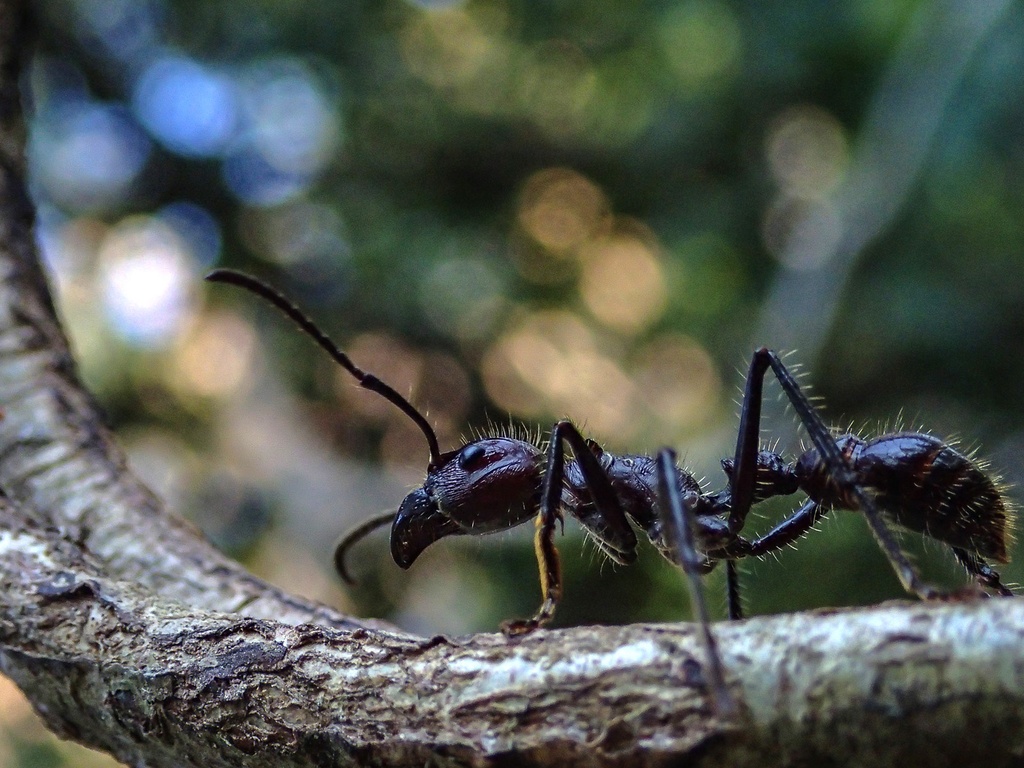
When it comes to ant prevention and control in Costa Rica, it's important to understand that these tiny creatures can be quite persistent. However, with the right strategies in place, you can effectively keep them at bay and enjoy your bug-free stay in this beautiful country.
One crucial step in preventing ants from invading your living space is to maintain a clean and tidy environment. Ants are attracted to food sources, so be sure to store all food items securely in airtight containers.
Wipe down countertops and tables regularly to eliminate any crumbs or spills that might entice these pesky critters. Additionally, make sure to take out the trash frequently and keep outdoor garbage bins tightly sealed.
Another effective strategy for ant prevention is sealing off any potential entry points into your home or accommodation. Inspect windows, doors, and cracks in walls for gaps where ants could sneak through.
Use silicone caulk or weatherstripping materials to seal these openings and create a barrier against ant intrusion. If you encounter an ant trail inside your living space despite taking preventive measures, it's time for some targeted action.
Natural remedies such as vinegar or lemon juice can be used as deterrents by spraying them along the path of the ants. You can also try placing cinnamon sticks or cloves near entry points as ants dislike these scents.
For a more direct approach, look into using boric acid baits that attract ants but are lethal when ingested by them. Remember that persistence is key when dealing with ants.
Be vigilant in maintaining cleanliness, regularly inspect for potential entry points, and employ appropriate repellents or deterrents if needed. By following these effective strategies for ant prevention and control, you can ensure a much more pleasant stay without having those unwanted six-legged guests marching through your living quarters.
Note: While this section focuses on ant prevention specifically, it's important to remember that each bug species has its own unique characteristics and behavior patterns. It's advisable to be prepared for encounters with various insects during your time in Costa Rica and take necessary precautions to protect yourself and your living space.
Scorpions in Costa Rica: Identifying and Avoiding Them

Among the diverse array of fascinating creatures that call Costa Rica home, scorpions stand out as some of the most intriguing. Although scorpions are generally not aggressive unless provoked, it's essential to be aware of their presence and take precautions to avoid any potential stings.
Identifying scorpions in Costa Rica can be a thrilling yet somewhat daunting task, given the many species found in the country. The most common type is the bark scorpion (Centruroides gracilis), identifiable by its slender body and long tail with a venomous stinger at the end.
It is relatively small, usually measuring around 3 inches in length. Another prevalent species is the black scorpion (Tityus fasciolatus), characterized by its glossy black exoskeleton and robust pincers.
To avoid unwanted encounters with scorpions during your time in Costa Rica, it's crucial to take certain precautions. Firstly, it's wise to shake out shoes or clothing before putting them on, as scorpions may seek shelter in these dark spaces.
When hiking or exploring natural areas, stick to well-defined paths and avoid reaching into crevices or under rocks where they may hide. If you do happen to spot a scorpion while exploring Costa Rica's rich landscapes, remember that they are not typically aggressive creatures.
It's best to observe them from a safe distance without disturbing their habitat or attempting to handle them directly. By maintaining mutual respect for these fascinating arachnids, you can coexist peacefully with them during your stay.
Remember that while we discuss various bugs and insects throughout this guide, including scorpions, it's important to keep things in perspective – encounters with dangerous creatures are rare for visitors to Costa Rica. However, being informed about local species can enhance your overall understanding and appreciation for the country's remarkable biodiversity.
So, as you explore Costa Rica's magnificent natural wonders, keep an eye out for scorpions but don't let the prospect of their presence deter you from embarking on exciting adventures. Take necessary precautions, enjoy the beauty of these magnificent creatures from a safe distance, and make lasting memories as you unveil Costa Rica's hidden world.
Cockroaches in Costa Rica: Types and Control Measures
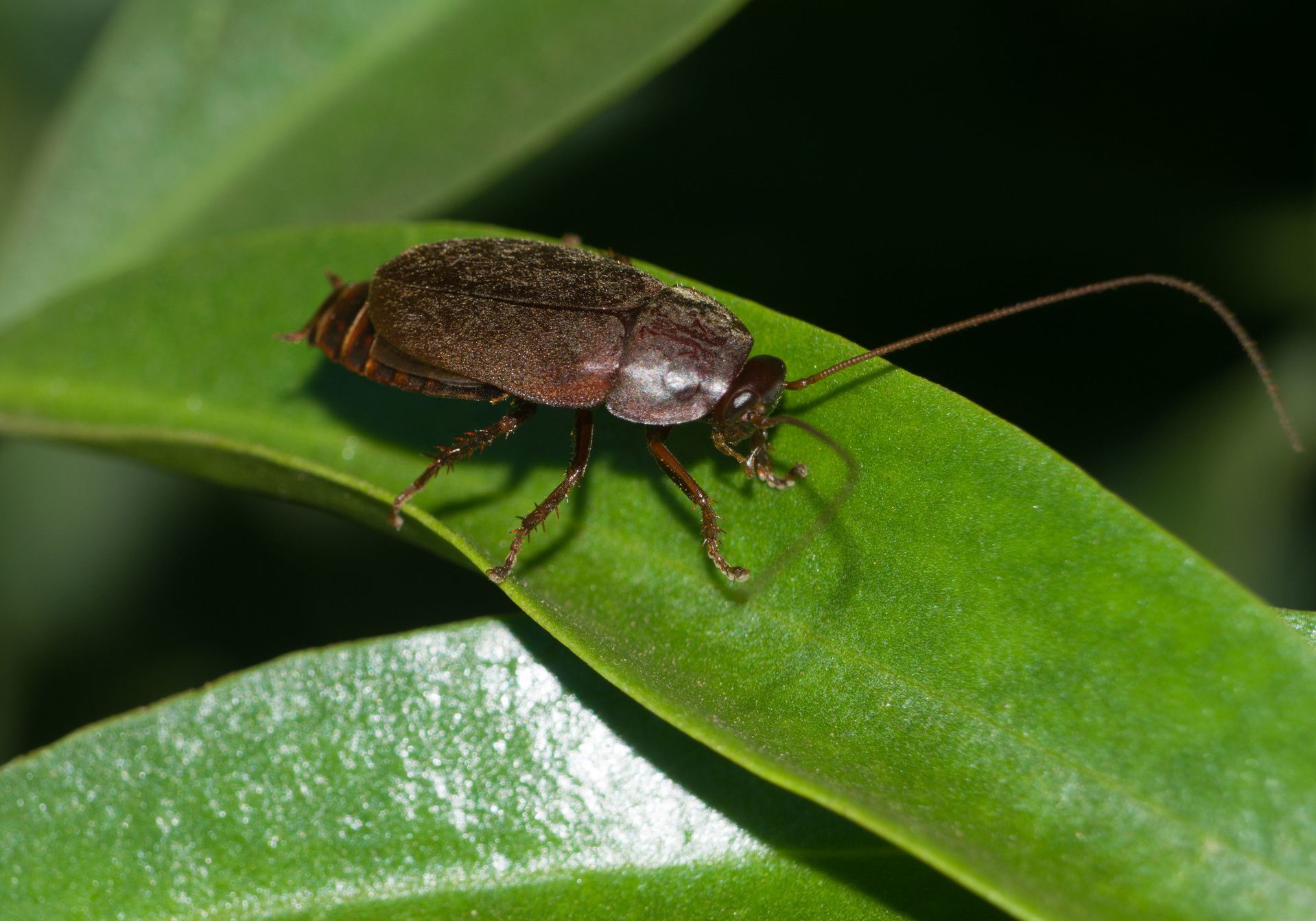
When it comes to bugs in Costa Rica, cockroaches are an inevitable presence. These resilient creatures have adapted well to the tropical climate and can be found both indoors and outdoors.
There are several types of cockroaches in Costa Rica, but the most common ones include the American cockroach, the German cockroach, and the smoky-brown cockroach. The American cockroach is one of the largest species found in Costa Rica.
These reddish-brown insects can measure up to two inches long and are known for their ability to fly short distances. They thrive in warm and humid environments such as kitchens, bathrooms, and basements.
The German cockroach, on the other hand, is smaller in size but more prolific. These light brown or tan-colored insects prefer dark and moist areas like cabinets and drains.
The smoky-brown cockroach is reddish-brown with shiny wings that cover its entire body length. Controlling cockroaches in Costa Rica requires a multi-faceted approach.
Prevention is key to keeping them at bay. Start by sealing any cracks or crevices through which they might enter your home.
Keep your kitchen clean by promptly cleaning up spills, storing food properly, and regularly emptying garbage cans. It's also important to fix any leaks or plumbing issues that could provide a water source for these pests.
If you already have a roach infestation, consider using bait stations or insecticides specifically designed for cockroaches. These products can be placed strategically around your home to attract and kill them effectively.
Additionally, hiring professional pest control services may be necessary if the infestation becomes severe. Despite their unpleasant reputation, it's worth noting that not all species of cockroaches found in Costa Rica are harmful or carry diseases.
However, their presence can still be bothersome and unhygienic if left unchecked. So taking preventive measures while implementing control measures will help you maintain a cockroach-free environment in your Costa Rican abode.
Encountering Bees and Wasps: Safety and Importance
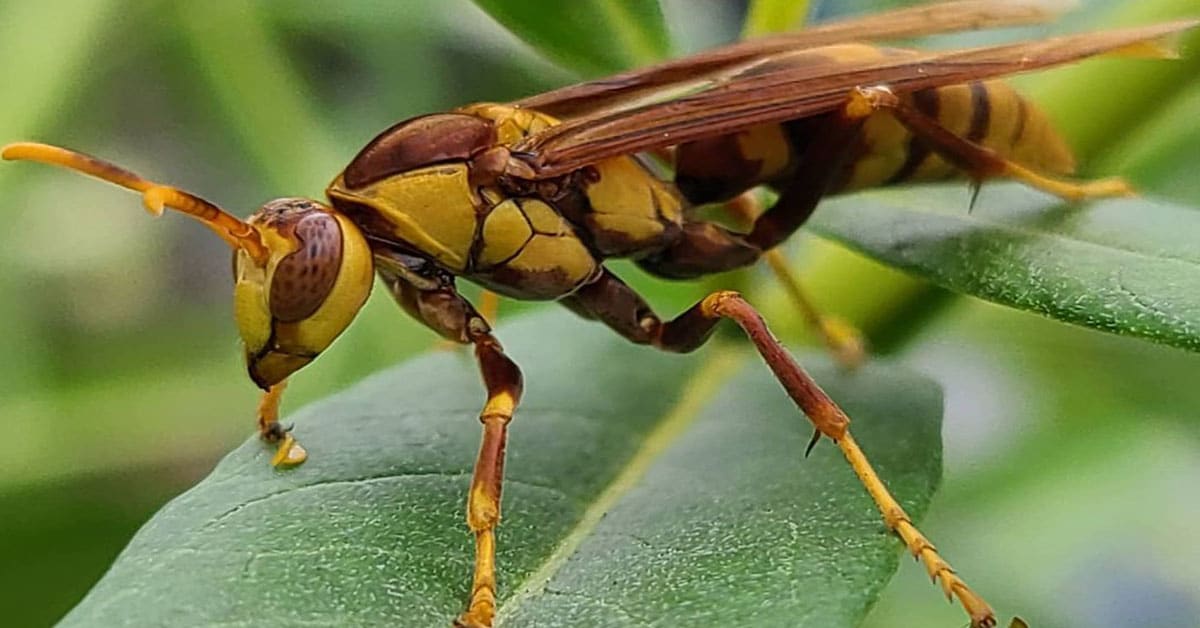
Encountering Bees and Wasps: Safety and Importance When exploring the vibrant natural landscapes of Costa Rica, encounters with bees and wasps are not uncommon. These buzzing insects play a crucial role in the ecosystem as pollinators, ensuring the reproduction of various plant species.
While some may fear them for their stings, it's essential to understand their importance and take necessary precautions to ensure a safe and enjoyable experience. Bees and wasps are attracted to nectar-producing flowers where they gather pollen, inadvertently transferring it from one plant to another as they move.
This process allows plants to reproduce and maintain biodiversity. As you venture into Costa Rica's lush rainforests or stroll through botanical gardens, you'll likely come across these hardworking insects diligently going about their pollination duties.
While bees are generally less aggressive unless provoked, wasps can be more temperamental. It is crucial to remain calm if a bee or wasp buzzes near you; sudden movements can startle them into perceiving you as a threat.
Remember that these creatures usually sting only when they feel threatened or cornered. To protect yourself from potential stings, consider wearing light-colored clothing with long sleeves while exploring bug-prone areas in Costa Rica.
Bees tend to be attracted to bright colors, so dressing in muted shades can help minimize contact with them. Additionally, avoid applying floral-scented perfumes or lotions that might attract bees and wasps.
If you do find yourself face-to-face with one of these buzzing insects, refrain from swatting at them or making sudden movements. Instead, remain still and calm until they fly away on their own accord.
If stung by a bee or wasp, quickly remove any visible stingers using a firm object such as a credit card or your fingernail—avoid using tweezers as this may squeeze more venom into your skin. Encountering bees and wasps in Costa Rica is an inevitable part of immersing oneself in the country's rich and diverse natural environment.
By understanding their ecological significance and taking necessary precautions, you can coexist with these buzzing creatures safely and appreciate their essential role as pollinators. So, whether you're exploring the cloud forests or meandering through botanical gardens, keep calm, dress appropriately, and embrace the beauty of these important insects while enjoying your Costa Rican adventure.
Ticks in Costa Rica: Prevention and Tick-Borne Diseases

Ticks, though small in size, can pose a significant threat to your health when exploring the lush landscapes of Costa Rica. It's essential to be aware of their existence and take necessary precautions to prevent tick bites.
Ticks are commonly found in wooded areas, tall grasses, and even on animals, so it's best to be prepared whenever you venture into these environments. Preventing tick bites starts with wearing appropriate clothing.
Opt for long-sleeved shirts, long pants tucked into socks or boots, and hats. This will create a physical barrier between your skin and the ticks.
Additionally, applying insect repellent containing at least 20% DEET on exposed areas is crucial for repelling ticks effectively. Remember to reapply as directed on the product label.
After spending time outdoors in potential tick-infested areas, thoroughly inspect your body for any signs of ticks. Pay close attention to hidden areas such as behind the ears, underarms, groin area, and scalp.
Using a mirror or enlisting the help of a companion can ensure a thorough check-up. If you find any embedded ticks, carefully remove them using fine-tipped tweezers by grasping as close to the skin surface as possible and pulling upward with steady pressure.
Tick-borne diseases can have severe consequences if left untreated. In Costa Rica, one of the most common tick-borne illnesses is Lyme disease; however, it is relatively rare compared to other regions around the world.
Nevertheless, it's important to be aware of its symptoms which may include fatigue, feverishness accompanied by chills or sweats, muscle aches/joint pain (similarly experienced during flu), swollen lymph nodes near the bite site (occasionally), or even an expanding rash that resembles a bullseye pattern around the bite area. If you experience any unusual symptoms after being bitten by a tick in Costa Rica, it's advisable to seek medical attention promptly.
Your healthcare provider can diagnose and treat any potential tick-borne diseases appropriately, ensuring your well-being. Remember, staying vigilant in tick bite prevention and prompt action in case of symptoms are the key to enjoying Costa Rica's natural wonders without unnecessary health concerns.
The Fascinating World of Costa Rican Butterflies
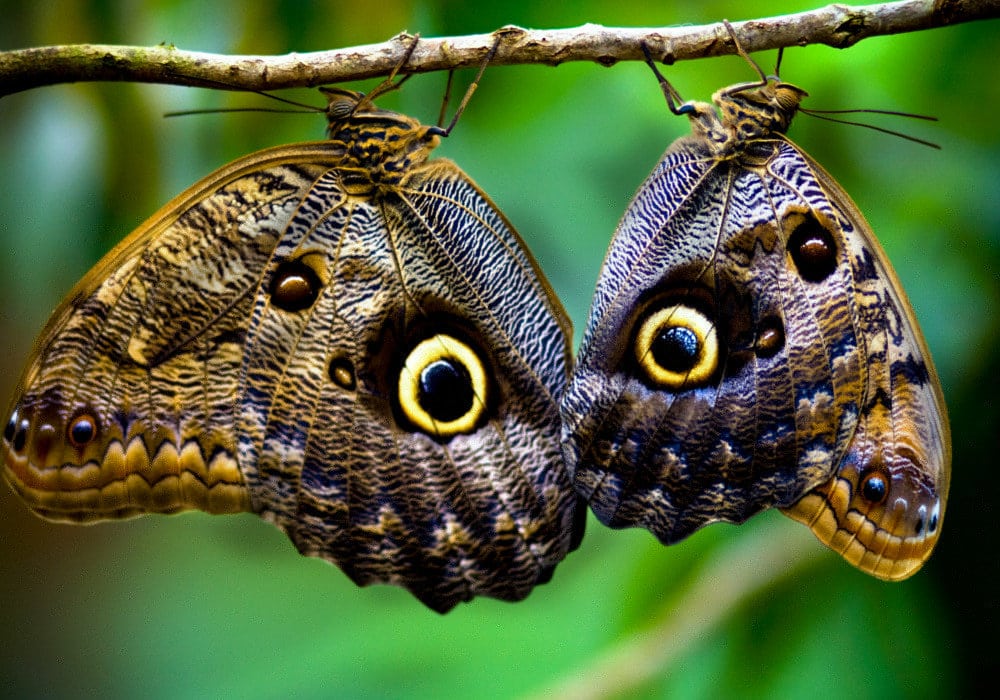
The lush rainforests and vibrant landscapes of Costa Rica are home to a captivating assortment of butterflies, each with its own unique colors and patterns. These delicate creatures, fluttering through the air like ethereal gems, add an enchanting touch to the country's bug-filled wonderland. Costa Rican butterflies come in all shapes and sizes, ranging from the small but vibrant Blue Morpho to the graceful Swallowtail.
If you're lucky enough to spot one during your visit, prepare to be mesmerized by their beauty. One of the most iconic species is the Blue Morpho butterfly.
Its dazzling sapphire-blue wings, spanning up to 8 inches in length, make it a true spectacle. The sight of a Blue Morpho gliding through the dense foliage is nothing short of breathtaking.
As sunlight filters through its translucent wings, they seem to shimmer and change color as if by magic. These magnificent creatures are often found near water sources like rivers and streams.
Another notable butterfly species in Costa Rica is the Swallowtail butterfly. With its distinctively elongated hindwings resembling tails, it gracefully flutters from flower to flower in search of nectar.
The Swallowtails showcase an array of vivid colors including yellow, orange, black, and blue accents on their wings. Their gentle flight patterns create a serene ambiance amidst the bustling insect orchestra that fills Costa Rica's forests.
Costa Rica is also home to countless other butterfly species that add splashes of color throughout every corner of this tropical paradise. From tiny hairstreaks with intricate patterns on their wings to skippers known for their rapid yet erratic flight paths—each species has its own story to tell within this enthralling ecosystem.
The country's commitment to conservation has resulted in nature reserves and sanctuaries specifically dedicated to protecting these captivating insects. Exploring these areas allows visitors not only to witness firsthand the diversity of butterfly species but also provides valuable insight into their life cycles and the crucial role they play in pollination.
These sanctuaries offer guided tours, where visitors can learn about butterfly habitats, observe the different stages of metamorphosis, and even have the chance to release a butterfly into its natural habitat. So, whether you're an avid nature lover or simply someone who appreciates beauty in all its forms, a trip to Costa Rica's butterfly wonderland is an experience that will leave you awestruck.
Witnessing these delicate creatures dance on the wind and flutter amidst lush vegetation is a reminder of the enchanting biodiversity found within this stunning country. So don't forget to keep your eyes open during your Costa Rican adventure, as these magnificent butterflies are waiting to take your breath away with their mesmerizing splendor.
Other Notable Insects: Crickets, Sandflies, and More

Moving on from the intriguing world of spiders and ants, let's delve into the fascinating realm of other notable insects that call Costa Rica their home. From the melodic chirping of crickets to the pesky presence of sandflies, prepare yourself for a closer look at these buzzing creatures. Crickets, known for their distinctive chirping melodies echoing through the tropical night, are a common sight in Costa Rica.
These small insects with their unmistakable long antennae and powerful hind legs belong to the Gryllidae family. Their songs serve as both a means of communication and courtship ritual among males seeking to attract mates.
While some find their serenades enchanting, others may find it difficult to sleep amidst their rhythmic chorus. Fear not though; crickets are harmless creatures that play an essential role in maintaining ecological balance.
On another note, let's talk about sandflies in Costa Rica. Given its lush rainforests and numerous rivers and lakes, it's no surprise that these tiny insects thrive in certain areas.
Sandflies are often associated with coastal regions or areas near bodies of water where they breed and feed on blood. While they are more active during dawn and dusk, precautions should be taken throughout the day to avoid bites.
Applying insect repellent containing DEET, wearing long sleeves and pants, and avoiding stagnant water can greatly reduce your chances of encountering these little nuisances. Apart from crickets and sandflies, there is a vast array of other captivating insect species you may come across during your time in Costa Rica.
From vibrant butterflies dancing through sunlit meadows to mesmerizing beetles displaying intricate patterns on forest floors, every step you take might unveil a new surprise awaiting your discovery. So keep your eyes open as you traverse this bio-diverse paradise – you never know what marvelous creature might cross your path!
The Role of Bugs in Costa Rica's Ecosystem
In the lush, vibrant forests of Costa Rica, bugs play a crucial role in maintaining the delicate balance of the ecosystem. These tiny creatures might be commonly associated with nuisances such as mosquito bites or encounters with cockroaches, but their contributions to the environment are far more significant than meets the eye. Mosquitoes are notorious for their itchy bites and can be quite prevalent in certain regions of Costa Rica, especially during the rainy season.
While their presence may cause some discomfort to humans, these insects serve as an essential food source for numerous birds, bats, and other predators. Additionally, mosquitoes contribute to pollination by feeding on nectar and spreading pollen from flower to flower.
Therefore, despite their pesky reputation among humans, mosquitoes hold a vital place in Costa Rica's ecosystem. Moving beyond mosquitoes, let's talk about some other buzzing creatures - bees!
Bees are not only responsible for producing delicious honey but also crucial pollinators that ensure the survival of countless plant species. In Costa Rica's rich biodiversity hotspots like Monteverde Cloud Forest Reserve or Corcovado National Park, you'll find a diverse array of bee species diligently buzzing from flower to flower.
This pollination process enables plants to reproduce and ensures the continuation of various ecosystems. While discussing bugs and their ecological importance in Costa Rica cannot be complete without mentioning spiders.
Although some species may be deemed poisonous or intimidating at first sight (yes, tarantulas do exist here), they play a critical role in controlling insect populations. Spiders feast on mosquitoes and other bothersome insects that can potentially transmit diseases or cause harm to crops.
Their predatory nature helps maintain equilibrium within ecosystems while simultaneously curbing pests that may otherwise disrupt the delicate balance between flora and fauna. Bugs might elicit mixed reactions among us humans due to their potential annoyance or fear-inducing characteristics; they fulfill essential roles within Costa Rica's diverse ecosystem.
From serving as food sources for larger animals to pollinating plants and controlling populations of other insects, bugs are integral players in maintaining the overall harmony of this remarkable natural paradise. So next time you encounter a mosquito or spot a spider web glistening in the sunlight, remember that these seemingly small creatures have a big impact on the remarkable biodiversity of Costa Rica.
Guided Tours and Activities: Exploring the Insect World
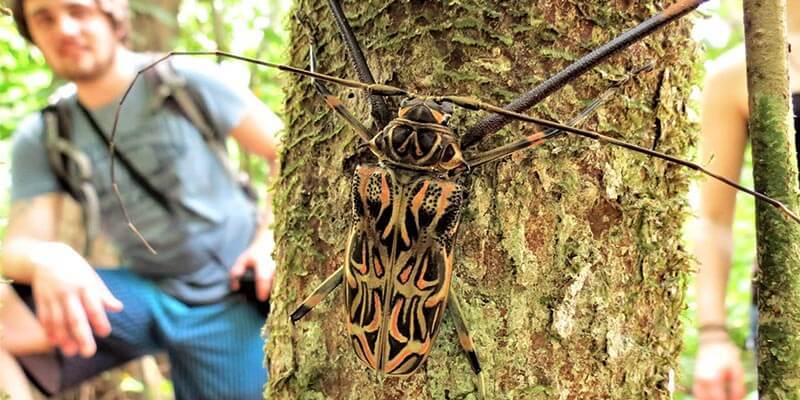
When it comes to exploring the vibrant insect world of Costa Rica, there are numerous guided tours and activities that offer fascinating insights into the country's diverse bug population. Whether you're an adventurous nature enthusiast or simply curious about the captivating critters that inhabit this tropical paradise, embarking on these insect-focused tours is a must-do experience. One popular option is the Bug Safari, where expert guides lead you through lush rainforests and introduce you to some of Costa Rica's most intriguing bugs.
As you walk along winding trails, your guide will point out different species of insects, from vibrant butterflies fluttering by to peculiar beetles scuttling beneath leaves. They'll reveal fascinating details about their behaviors, habitats, and even share stories about dangerous bugs in Costa Rica that you may encounter during your exploration.
For those seeking an up-close encounter with scorpions of Costa Rica and other arachnids, the Spider Night Walk tour provides a thrilling adventure. Led by experienced guides equipped with UV lights that make spiders' eyes glow in the dark, this nocturnal expedition takes you deep into the rainforest after sunset.
As you navigate through the wilderness under a starlit sky, be prepared for encounters with majestic orb-weaving spiders spinning intricate webs and elusive tarantulas lurking in tree hollows. If mosquitoes in Costa Rica are on your mind but you still want to appreciate their role within the ecosystem without suffering endless bug bites, consider joining a specialized Insect Farm tour.
These tours take place at dedicated farms where insects are bred for research purposes or as part of sustainable food initiatives. In addition to learning about these fascinating creatures' life cycles and unique adaptations, some farms even offer visitors an opportunity to taste edible insect snacks!
It's a chance to challenge your preconceptions about insects while gaining a deeper understanding of their importance in Costa Rican culture. These guided activities provide incredible opportunities for nature enthusiasts and curious travelers alike to immerse themselves in the captivating world of Costa Rican bugs.
From bug safaris and spider night walks to insect farm visits, each experience promises to leave you with a newfound appreciation for the hidden intricacies of this tropical wonderland. So, pack your sense of adventure and get ready for an unforgettable journey into the realm of Costa Rica's insects!
Visiting Butterfly Sanctuaries: What to Expect

When exploring the incredible biodiversity of Costa Rica, a visit to one of its enchanting butterfly sanctuaries is an absolute must.
These sanctuaries offer a captivating glimpse into the world of these delicate winged creatures, providing a unique opportunity to witness their life cycle and marvel at their vibrant colors. Let's delve into what you can expect when visiting these magical sanctuaries.
As you step inside the sanctuary, be prepared for a sensory overload. The air is thick with the fragrance of tropical flowers and the gentle fluttering of countless wings.
Vibrant hues of blues, oranges, and yellows float gracefully in every direction, as if nature itself has transformed into a living rainbow. The sight alone will leave you breathless.
The butterflies in Costa Rica come in an astonishing array of species. From the iconic Blue Morpho with its iridescent blue wings to the intricate patterns adorning the Glasswing butterfly, each species possesses its own unique charm.
If you're lucky, you might encounter some rare species like the enormous Owl Butterfly or even spot elusive nocturnal flyers like Luna Moths. As you stroll through carefully curated gardens designed to recreate natural habitats, knowledgeable guides will offer fascinating insights into butterfly behavior and ecology.
They'll explain how butterflies undergo metamorphosis from eggs to caterpillars and eventually emerge as stunning winged adults. Watch in awe as they delicately sip nectar from flowers or bask in rays of sunlight that filter through the foliage overhead.
Some sanctuaries also have interactive exhibits where visitors can learn about conservation efforts aimed at protecting these beautiful creatures and their habitats. You might even have an opportunity to witness butterflies emerging from their chrysalises or hold a friendly caterpillar on your hand—an experience that will undoubtedly ignite your sense of wonder for these tiny but extraordinary beings.
So, whether you're an avid nature enthusiast or simply seeking a magical experience, a visit to a butterfly sanctuary in Costa Rica promises to be an unforgettable adventure. Immerse yourself in the kaleidoscope of colors and delicate movements as you appreciate the intricate beauty and fragility of these winged wonders – truly a sight that will stay with you long after your journey ends.
Health Concerns: Addressing Bug-Related Risks in Costa Rica
When visiting Costa Rica, it's essential to be aware of the potential health concerns related to bug bites and encounters with insects. While the country boasts incredible biodiversity, it also means a diverse range of bugs, some of which can pose risks. By understanding these risks and taking necessary precautions, you can enjoy your time in Costa Rica while minimizing any potential issues.
Mosquitoes are a common concern when it comes to bug-related health risks in Costa Rica. The country's tropical climate provides an ideal breeding ground for these pesky insects.
It is important to note that not all mosquitoes carry diseases, but certain regions in Costa Rica have reported cases of mosquito-borne illnesses such as dengue fever, Zika virus, and chikungunya. To protect yourself from mosquito bites, consider using insect repellent with DEET, wearing long sleeves and pants during peak mosquito activity hours (dawn and dusk), and staying indoors or in well-screened areas when possible.
Another aspect to consider is spiders in Costa Rica, especially the prospect of encountering poisonous species like the infamous Brazilian wandering spider. While these spiders are indeed present in Central America, including parts of Costa Rica, they are rarely encountered by tourists or locals due to their habitat preferences.
In general, most spiders you might come across are harmless and play significant roles in controlling other insect populations. However, it's always wise to exercise caution when exploring natural environments or reaching into dark crevices where spiders might reside.
In addition to mosquitoes and spiders, scorpions can also be found in certain regions of Costa Rica. However, their presence is relatively low compared to other countries with higher scorpion populations.
Scorpions tend to dwell in dry areas such as deserts rather than lush rainforests commonly found throughout much of the country. If you're camping or staying in rustic accommodations outside urban areas where scorpions may be more prevalent (such as Guanacaste), it's advisable to shake out your shoes, clothing, and bedding before use.
This simple precaution can significantly reduce the chances of a scorpion sting. By understanding the potential health risks associated with bugs in Costa Rica and taking necessary precautions, you can mitigate any concerns and enjoy your time exploring the country's incredible biodiversity.
Remember to stay informed about current mosquito-borne disease updates, use appropriate insect repellents, and take extra care when exploring natural environments where spiders or scorpions may reside. With responsible preparation, you can appreciate Costa Rica's hidden world of bugs while keeping yourself protected.
Frequently Asked Questions About Costa Rican Bugs
1. Are mosquitoes really that bad in Costa Rica? Yes, mosquitoes are quite prevalent in Costa Rica, especially in humid and tropical regions. The country's climate provides the perfect breeding grounds for these pesky insects.
While some areas may have higher mosquito populations than others, it's important to note that not all mosquitoes carry diseases. However, certain regions of Costa Rica are considered high-risk areas for mosquito-borne illnesses such as dengue fever, chikungunya, and Zika virus.
To protect yourself from mosquito bites in Costa Rica, it is advisable to use effective insect repellents containing ingredients like DEET or picaridin. Wear long-sleeved shirts and pants when venturing into areas with dense vegetation or during peak mosquito activity times such as dusk and dawn.
Additionally, staying in accommodations with air conditioning or using bed nets can help keep mosquitoes at bay while you sleep.
2. What should I do if I get bitten by a spider or other dangerous insect?
While encounters with dangerous spiders or insects are relatively rare in Costa Rica, it is wise to exercise caution when exploring natural habitats. If you suspect you have been bitten by a venomous spider like the infamous Brazilian wandering spider (sometimes found in this region), immediately seek medical attention.
For other common insect bites such as those from ants or bees, first wash the affected area with soap and water to reduce the risk of infection. Applying a cold compress can help alleviate swelling and discomfort.
Over-the-counter antihistamine creams or oral medications can also provide relief from itching caused by bug bites.
3. Can I find scorpions in Costa Rica?
Yes, scorpions can be found in certain parts of Costa Rica, particularly arid regions such as Guanacaste province and the Nicoya Peninsula. However, they are generally not considered a major threat to human health unless you have an allergic reaction to their venom.
If you come across a scorpion, it is best to keep a safe distance and avoid disturbing it. Wearing closed-toe shoes and using a flashlight at night can help prevent accidental encounters.
It's important to note that scorpions are generally more active during the warmer months, so take extra precautions if you're visiting Costa Rica during this time. Remember that while bugs and insects are part of Costa Rica's diverse ecosystem, being informed and taking necessary precautions can help minimize any potential risks associated with encounters with them.
Conclusion: Embracing the Natural World of Costa Rica
As we conclude our journey through Costa Rica's hidden world of bugs and insect encounters, we cannot help but be in awe of the rich biodiversity that this country offers. From the vibrant colors of butterflies to the intricate webs woven by spiders, Costa Rica is truly a paradise for nature enthusiasts and bug lovers alike.
One of the most important takeaways from our exploration is that although there are numerous bugs in Costa Rica, it should not deter you from experiencing the wonders of this beautiful country. Yes, there are mosquitoes and other insects that may be bothersome at times, especially during peak seasons.
However, with proper precautions such as using insect repellent and wearing protective clothing, you can minimize the chances of bug bites and enjoy your adventures without interruption. When it comes to dangerous insects in Costa Rica, it's essential to stay informed but not let fear consume us.
While there are a few venomous creatures like scorpions and spiders present in certain regions, they generally pose little threat as long as you exercise caution and respect their habitats. By being aware of your surroundings and following expert advice on handling encounters with these creatures, you can safely navigate through Costa Rica's natural wonders.
As we bid farewell to the bugs of Costa Rica, let us take with us a newfound appreciation for their role in maintaining delicate ecosystems. These fascinating creatures play vital roles in pollination, soil enrichment, pest control, and more.
By embracing the natural world around us – bugs included – we contribute to preserving biodiversity for future generations to appreciate. So go ahead and venture into this captivating realm where butterflies dance on gentle breezes, ants march with unwavering determination, and spiders create intricate works of art.
Embrace all that Costa Rica has to offer – its lush rainforests teeming with life – knowing that even its smallest inhabitants have an important part to play. Happy exploring!



